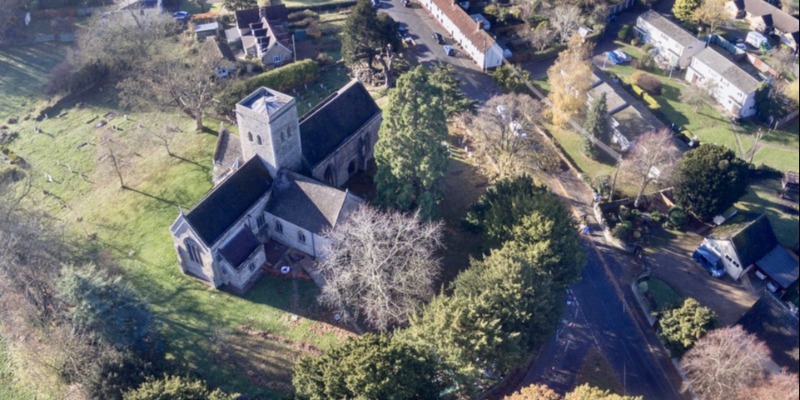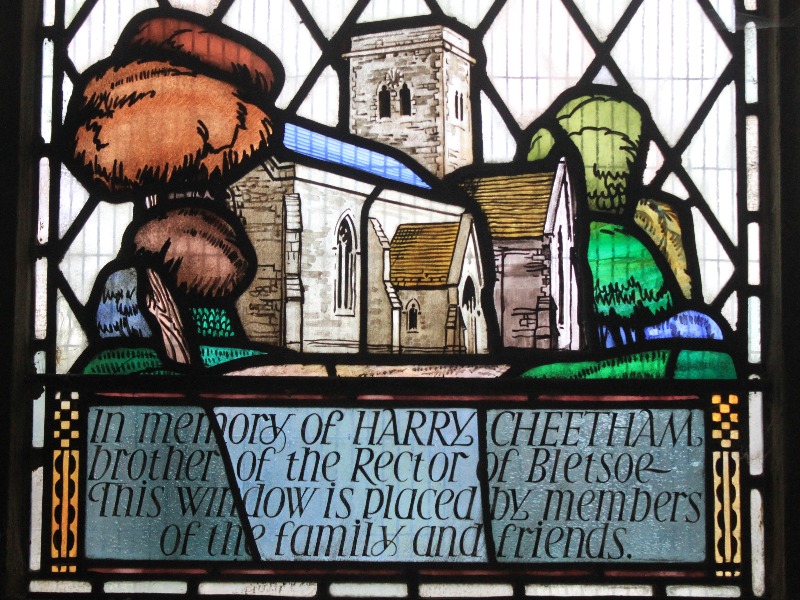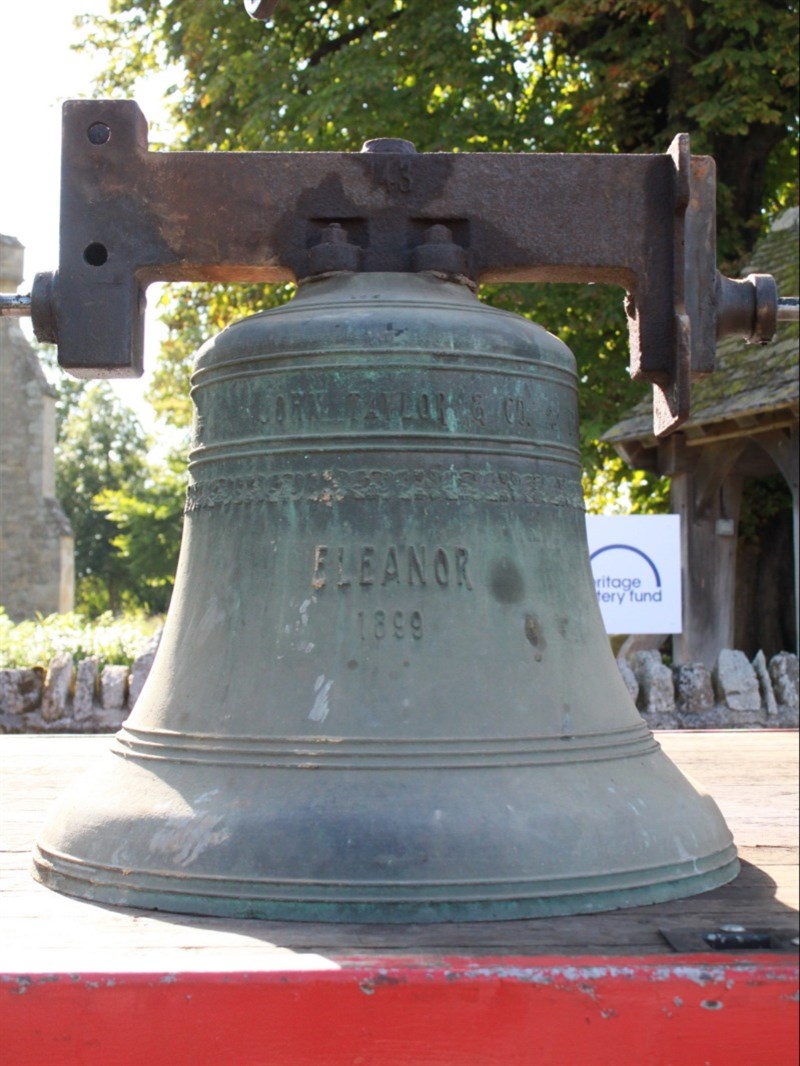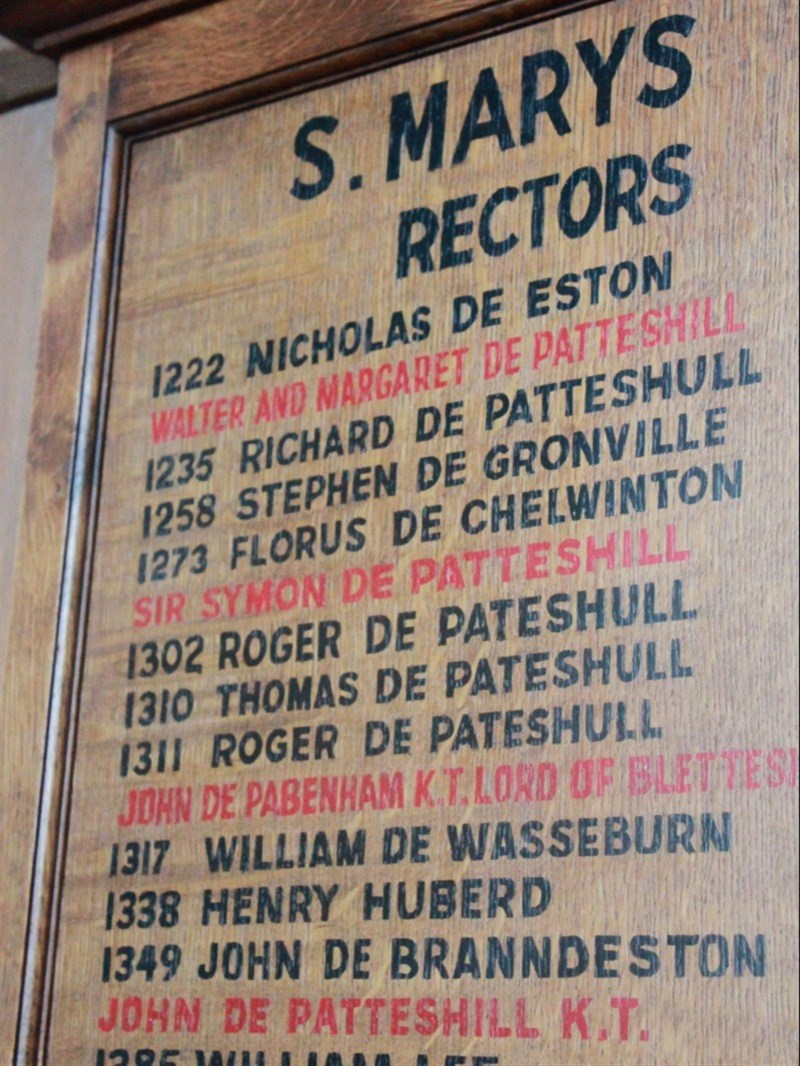Church History

St Mary’s is a grade II* listed church (actually named St Mary the Virgin). The building shows evidence of development from pre-Norman times onwards, traces of which were rediscovered during the renovations in 2018 / 2019. The building has a central tower with Saxon and Norman elements, a late-13th century nave without aisles, a 14th century south transept which previously housed the organ until the 1970s and is now the vestry / storage area, a north transept incorporating the St John family chapel which includes a family mausoleum that is now closed; a 14th century chancel and a 19th century vestry which was added during the comprehensive Victorian restoration, evidence of which is seen in the panels to the tower in the nave behind the pulpit and lectern or the reredos in the chancel behind the high altar. The two main stained glass windows date from the 1860s restoration when the East Window was installed using a glassmaker from Munich while the West Window marks the life of the then Rector’s brother Harry Cheetham, a printer, taking that as a theme.
West Window

By the second half of the 20th century, the chancel was in very poor condition as were the roofs of both the chancel and nave. After significant and costly work to renovate the nave roof in the 1960s, water ingress ruined the chancel furnishings and interior walls. The decision was taken to block up the chancel arch with a brick wall and create a sanctuary in the tower crossing. The transepts had already been separated from the crossing by wooden screens, so the organ was moved to its current position at the rear of the nave, creating a vestry in the south transept. In the 1970s a benefactor paid for the chancel to be re-roofed which secured that part of the building which had been potentially considered to allow to fall into ruin but no other significant repairs had been undertaken to this part of the building. The 19th century old vestry attached to the north side of the chancel was left roofless. Water ingress through the abutment of tower and North Transept also required the movement of the St John Memorial from the St John Chapel to the nave where it blocked off the North Door.
St John Memorial

The formation of a Friends of St Mary’s group in 1988, at the instigation of the then Rector with the experience of the work of similar Friends groups in Blunham and elsewhere, brought a significant injection of effort and money from villagers and others beyond the church congregation. The alliance with Bletsoe Village Hall developed the church fete into a much bigger fundraising event and, through events & donations, the Friends raised over £100,000 from inception to 2012 which was spent on the renewal of the church fabric based on the increasingly comprehensive architect Quinquennial Inspections. Specific work included stonework, underpinning, repairs to walls caused by clay heave, capping off the old vestry to preserve the stonework and two interior repaints.
With the work from the 2010 Quinquennial Inspections largely complete, the Friends addressed the major outstanding restoration issues which included the church congregation requirements, identified by the Parochial Church Council in a joint study, of a toilet and refreshment unit. It was decided to combine all the needs into one project and in 2013 a four year timeframe was agreed to cost and fund raise for the restoration of the chancel, the re-roofing of the Victorian vestry and conversion into a toilet, the placing of a refreshment unit in the chancel together with the restoration of the damaged East Window and the restoration of the significant mediaeval 13th century font. The total required was estimated to be over £300,000 and would include a new lobby built onto the Victorian vestry to provide separate external access. The last two items were carried out during the funding study using specialist grants and donations and, separately, the bells of St Mary’s were removed and restored during this period.
Bell restoration

The bells are a peal of six and have historical relevance being the first peal cast by Robert Taylor, then of St Neots but latterly of Loughborough. The firm still exists and is now the only major bell foundry in the UK. The ringers of Bletsoe managed this project and raised the funds, 90% of which came from then then-named Heritage Lottery Fund therefore allowing the main restoration project to be the focus of village fundraising. To find out more about Bell Ringing at St Mary's please visit out Bell Ringing page.
In 2017, the fundraising study concluded that with over £200,000 raised through a cocktail of gifts and grants, that work should start and the Friends committed to raising the additional £100,000. Work started in the winter of 2018 which was difficult due to poor weather and issues below ground. This meant that the project was adjusted to fit within the £300,000 fundraising scope and the new-build lobby together with heating improvements were deferred. The project was completed just in time for the rededication by the Bishop of Bedford on 30th September 2019 at Harvest Festival. The space now provides for any church meetings and activities together with full facilities for use by both the church congregation and any public or private events.
Chancel

Family History research
If you are interested in family history research please be aware that only the current registers are held by the Church. All others may be found at the Bedfordshire Archives and Records Service at Borough Hall in Bedford. Their website contains a considerable amount of helpful information and their full contact information. You may still of course contact us but we may only be able to offer limited help.
Rectors of the past
